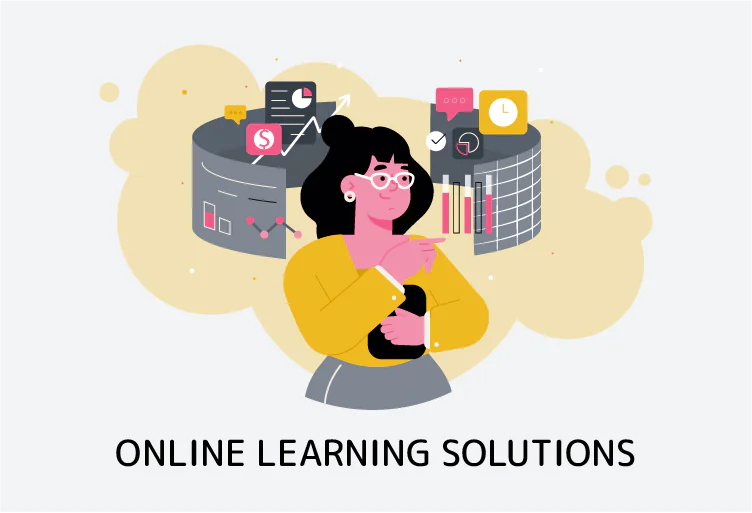While traditional classes are mostly suited to youngsters who need academic exposure and a collaborative environment to be able to grasp concepts, online education is popular among adults, particularly those who are already working or have their own business. Yet, the debate surrounding which method is better continues to occupy discussions around this particular topic.
Initially, the idea of virtual or online classes appeared to be strange to many people who believed that this new teaching and learning approach opposed the traditional values of teaching. However, as things moved on, they began to realize that like everything else, alterations in education are necessary to suit the present values. Hence, the idea of implementing eLearning and virtual classes began to sink in more rapidly, especially when popular universities embraced and adopted the idea.
The Changing Nature of Education
The world has adopted a novel approach in both studying and teaching. In modern education, teachers no longer play the role of ‘dictators’ in classrooms. They are now facilitators and supporters who encourage and guide thinking. Students do not merely rely on lectures anymore. Instead, they learn from various online course platforms.
Gamification elements, interactive activities, and tasks are used to attain knowledge. Most importantly, intelligence is not just determined by academic performances and grades, but rather, it is perceived as a multi-dimensional thing, taking into account different abilities such as technical skills, attitudes and behavior, communication and interpersonal skills, and other capabilities.
Also, before students step into their practical lives, they’re expected to be well-versed with basic computing skills, no matter what degree programs they have completed. In addition, extra technical skills beyond the scope of academic degrees are increasingly being seen as an outstanding factor for candidates in corporate environments.
Comparison of Online Classes and Traditional Classes
There are several other factors that can be used to compare online classes with traditional classes. Each factor justifies how one method is more feasible or effective than the other method.
Flexibility
Among the most crucial factors differentiating online classes and traditional classes is flexibility. Traditional classes have fixed class schedules and durations. Students are bound to follow them, having no choice whatsoever. On the other hand, virtual classes offer a great deal of flexibility in terms of schedules and learning processes.
Some people aspire to learn, but family or career obligations make it impossible for them to attend regular classes on a fixed schedule. As a result, they’re deprived of higher education. Online education allows learners to schedule their classes according to their availability and needs. Depending on the course, they may even be able to attend the sessions in sections, taking breaks whenever they like.
It’s because of this flexibility that working professionals and those who have family obligations are increasingly turning to online programs so that the classes don’t interrupt their work. By opting for online classes, they’re able to attend lectures and work on assignments and projects in their spare time.
Similarly, learners can shape and organize the learning process on their own. They may decide to cover difficult topics first and then move on to the easier ones, or vice versa. This isn’t possible with the traditional class model as the study preferences of students differ greatly, and thus, the sequence of topics is planned by the instructor according to what suits him/her.
In addition, the traditional class model requires students to be physically present at the campus to be able to attend the class. This means that you’re surely missing the lecture if you can’t attend the class due to illness or any other reason. In the case of online classes, you attend a class from wherever you like. This makes education much more convenient and saves the traveling time and costs needed to visit the campus.
Studying abroad is also made easier than ever as students don’t have to worry about visas, traveling, accommodation, and other obligations to be present at a foreign college.
However, proponents of the traditional class model point out that flexibility can instead act as a barrier to learning. They think that it’s against the class rules to sleep, eat or use a smartphone during lectures, that students should be free from such ‘distractions,’ and follow the rules of traditional classrooms to be able to learn. Since online classes lack the necessary guidance, all types of learners won’t be able to follow those rules, and thereby, might not be able to give their full attention to what they are learning.
In contrast, students in a traditional class don’t have many options besides learning, so they tend to focus and learn more. However, students who are really interested and are passionate about the course they’re being taught will automatically work hard. Their appetite for learning may even encourage them to learn much more than what a traditional class has to offer.
Needless to say, students with a lack of interest in the subject will not necessarily learn much in traditional classes either.
Study Resources
The nature and type of study resources available for online education differ a lot from those used in traditional classes. The eLearning trends have led students to switch from traditional textbooks to eBooks. Traditional classes still heavily rely on textbooks which are often considered inconvenient by the new generation, both in terms of studying and carrying. Online education mostly relies on e-resources that can be accessed from anywhere and can be carried easily using USBs if students prefer that.
Moreover, universities with a traditional model typically provide access to resources available at the university library. On the other hand, colleges that are fully online greatly expand the resources offered to their students. But before learners decide to enroll at any such institution, they should try and find out what resources will be offered for course learning.
Learning Environment
Proponents of the traditional class model argue that students in online learning environments do not get the required academic exposure. Learning demands interaction with fellow classmates, which online platforms lack. However, this argument is countered by further technical advancements as universities across the US are introducing satellite facilities across the nation and around different parts of the world to allow online students to meet and take part in virtual events.
In addition, many online programs organize physical events from time to time so that students can socialize and work on group projects, which leads to the increased learning engagement. Hence, interaction is no longer limited to traditional classrooms. It’s now up to the online students to decide how much interaction they’d like to have with others. Just because you’re attending online classes doesn’t mean that you can’t interact with others. All you need to do as an online learner is to reach out to others and find common ground to develop friendships.
Feedback
In traditional classrooms, the learning process is hampered by delays in instructor feedback. While techniques are now changing in traditional classes, since most of the course work is still handled manually by teachers, they’re preoccupied with a lot of things. Plus, manual grading is common in traditional classrooms, which further consumes a lot of time. As a result, teachers need more time to respond to student queries or requests for feedback. This significantly slows down the learning process.
On the other hand, online classrooms have numerous digital mechanisms in place that means that many of the straightforward tasks, like managing student attendance, grade books, etc., are automated. Instructors have a lot of free time to focus on teaching strategies and offering immediate feedback to students. They’re able to address any student queries immediately, speeding up student learning.
Personilized learning
The traditional Class model is based on the assumption that all students have the same capacity to process content – and at the same speeds. In reality, different students adapt to different teaching styles, and they do so at varying speeds. How many times do we see parents complaining that teachers fail to provide their children with the attention they need? However, it’s not the teachers but the system to be blamed. With so many students in a class, the instructor can’t follow up with each student.
While some students are quicker to grasp concepts, others need some kind of conditioning or reinforcement. The idea of online classes takes this into account and offers the individualized learning experience that suits many students. Many universities offering online education take the students through a personalized step-by-step learning process. All elements of education, including instruction, assessments, performance evaluations, etc., are adapted to the learner’s pace and preferred style.
In traditional classes, one problem that significantly hampers learning is that students tend to hesitate when it comes to asking questions. While some students are interactive during lectures, others lack the confidence or feel uncomfortable asking questions in front of a large number of students. The individualized learning experience in online education also solves this problem. Online students do not have to compromise on learning as they are free to ask and obtain feedback from the instructors.
Course Variety and Choices
While the traditional model of education offers courses pertaining to all the different types of specializations, online classes offer a very limited choice. In time, as virtual classes get more popular, online students will have the same number of program choices as students of traditional classes have.
Student Performance and Retention Rates
There are differing views in this area. According to research, students enrolled in online classes perform better than those who attend traditional classes. This is because online students do not rely on external forces to put in the effort and work hard in a course. It’s their own motivation that encourages them to learn, perform well in all modules, and eventually graduate. This self-reliance is a strong proponent for success. But why is the retention rate extremely low for online degrees?
According to the other perspective, retention rates for online education are low because not all students can efficiently benefit from self-reliance. Many students need to be constantly monitored and motivated to remain consistent. With a lack of support, they tend to give up more easily, which is the case with most online learners. But there might be other factors that may have led to lower retention rates for online education.
The fact that online learning solutions are about to achieve a firm grounding in the education sector. Many corporations do not see online education as they see traditional classes. As a result, the two modes remain highly incomparable in the corporate world. This could be another reason why most students leave a course before finishing.
Whatever the reasons are, things will get clearer as we move toward digitization, with the new generation expected to favor online education.
Education Costs
An online educational institution charges a fraction of the tuition fee charged by a traditional university that needs to maintain a large campus. Without any costs for the maintenance of classrooms, physical libraries, recreational facilities, such as sports, infrastructure, etc., online universities save a lot. The only major cost is the maintenance of digital platforms. Hence, they charge a low tuition fee, making it possible for everyone to access higher education.





